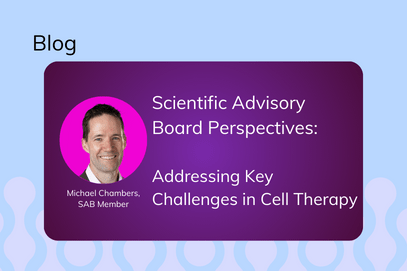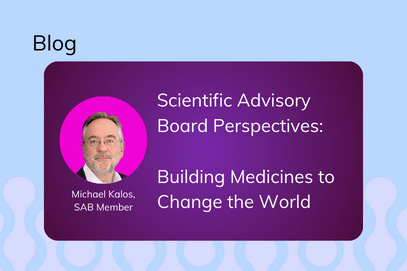RoslinCT Blog Series: Scientific Advisory Board Perspectives
Ken LeClair, RoslinCT SAB Chair
The Future is Non-Viral – Part 2
In Part 1 of “The Future is Non-Viral” blog series, our SAB Chair Ken LeClair, Ph.D., shared his perspective on the opportunity and advantages of using non-viral vectors for producing gene therapies and engineered cell products. In Part 2 of our conversation, he describes ongoing efforts to improve the delivery of non-viral vectors into patient cells.
Viral vector transduction rates are variable from patient to patient, and across different vector batches; as such, the degree of successful cell reprogramming with viral vectors is not predictable nor always consistent. The delivery of most viral vectors into cells relies on some receptor protein complex on the target cells. This can be a liability to the delivery process because not all target cells express the appropriate receptor for the viral vector and cells need to be appropriately activated to make them receptive to the selected viral vector.
Physical and Chemical Delivery Methods
Delivering non-viral vectors into target cells requires some way to make the cell receptive and tolerant. There are several physical, electromechanical, and chemical methods that are being developed to achieve the efficient delivery of non-viral vector cargoes. One of the most common delivery methods is cellular electroporation in which a variable electric shock is applied to cells making them temporarily permeable to extracellular materials. One drawback to electroporation, however, is that the platforms in current clinical use can cause significant cell death. In addition, each cell may get a different dose of vector, so uniform delivery can be a challenge.
“Most electroporation platforms require cells to be buffer exchanged into a more conductive liquid medium than is used to culture cells. However, cell exposure to these non-physiological buffers needs to be minimized,” noted Dr. LeClair. “After electroporation, the cells are exchanged back into a more physiological growth medium. These additional unit operations require more cell manipulation and instrumentation, the use of more buffers, media, consumables, and can lead to epigenetic changes, loss of cell viability, and an increased risk of contamination. This extra workflow also requires more sampling, with data from analytic assays to generate and report, which leads to larger and more complex batch records for every product.”
Microfluidic technology is being leveraged to improve the electroporation process and offers several important benefits. With this technology, cells pass through a microfluidic electroporation zone. The very small gap across the microfluidic channel allows the use of reduced voltages to successfully deliver material into cells. This gentler and less toxic delivery of cargo into cells avoids cell loss during the material transfer step. Microfluidic channels also allow the controlled flow of cells through the electroporation zone and help to ensure cells are more uniformly loaded with vector constructs. Another advantage is that different microfluidic liquids can be kept apart or combined using laminar flow controls, so that fewer, or no buffer exchange steps are needed before and after the electroporation event.
Several biochemical delivery approaches are also being developed. Lipid nanoparticles (LNPs) can be formulated to enclose therapeutic nucleic acids and/or proteins into a lipid vesicle which is then taken up by cells when the LNP fuses with the cell membrane. First-generation LNPs are typically delivered to many different cell types in a nonspecific manner. To address this limitation, methods are being developed to introduce cell type specificity and restrictions to enable more targeted delivery.
Towards More Efficient Delivery
The efficient, uniform, and less toxic delivery of non-viral cargoes such as transposons, mRNAs, gene-editing components into target cell types is a key area of focus for the cell and gene therapy industry. More effective and gentle delivery platforms will reduce product costs and manufacturing timelines while better control of cargo delivery will enable more efficient manufacturing of higher-quality and more effective cell and gene therapies for patients. Ultimately, the cell or tissue type-specific delivery of therapeutic constructs could be delivered selectively to reduce the overall costs and risks of gene and cell therapies.
Undoubtedly, the full potential of cell and gene therapies will continue to be revealed. A key enabler to this success will be manufacturing processes that are faster, more automated, more efficient, and more cost-effective. Integrating the use of non-viral vectors into cell product production processes will be a significant contributor to reducing costs of goods, while maintaining efficiency and simplicity.
“Development of elegant, efficient, and controlled methods for delivering non-viral vector cargoes into cells will accelerate the adoption of non-viral vectors as the preferred way to reprogram patient cells,” predicts Dr. LeClair.


